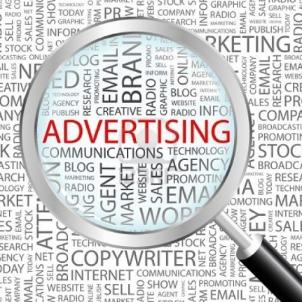Building a Better Native Ad -- Dave Zinman

Native has secured its place in the advertising arsenals of many of the world’s biggest brands and publishers such as Forbes, The Atlantic and Mother Jones. These sites have reputations as premium content providers and brands know that they are frequented by high quality audiences who demand a premium experience. They are benefiting from native by creating beautifully seamless ad implementations that fit perfectly into the look, feel and (usually) the tone of their sites.
Those custom ad units may be elegant and seamless, but unfortunately, they also have shortcomings that can affect their efficacy and accessibility.
First, they are time, labor and cost intensive for publishers (and advertisers if they want to be involved in the design or content creation.) They require custom technology and design work that takes time, which can ultimately work against advertisers and publishers who want to capitalize on relevant, timely content.
Secondly, these types of ads don’t scale. For advertisers, it’s a one-shot deal. That ad will run on that site for a set period of time, and only visitors to that site or its network of sites will ever get to see it. A single ad unit that takes a great deal of time and resources to create has extremely limited reach. So advertisers who want to combine reach with native will have to invest time and effort to create custom units for each publisher with whom they work.
Finally, and perhaps most importantly, these ad units don’t target user intent. Rather, they very broadly target readership based on demographics. So it is conceivable that a middle-aged conservative woman in Texas will see the same ad as a liberal millennial man in New York; they fall into the same audience segment simply because they both read Forbes, yet their ideals, interests and needs are likely to be wildly different in many respects. For advertisers looking to zero in on specific audiences, this approach is wasteful and rather ineffective.
And unfortunately, even if the engagement rates are stellar, the CPMs are often so high that the overall return is still fairly low. Between the cost and effort of creating the ads and the relatively low return, this form of native is not a sustainable long-term strategy for publishers or advertisers.
The dilemma is, native advertising can create an organic, relevant experience for consumers that can lead to amazing revenue for both advertisers and publishers, but those “true” native ads don’t really live up to that potential because of the scalability problem. The good news is, a form of native has evolved to answer those shortcomings, to deliver ads that still blend with the look and feel of the site and/or run in-stream – but can scale across sites and platforms, target intent and cost less to build.
The key to making native scalable is automating the process of analyzing page content and matching that content to appropriate advertisers. Open native platforms automatically understand the content of many pages at once, boils them down to the most relevant keywords, and then matching advertisers to those keywords. This offers a much more efficient way to scale native than hand selecting content that is created for a specific page or site.
Open native platforms also automate the process of integrating the advertising content into a site’s look and feel to maintain the overall experience. This type of platform significantly reduces the cost of creating and distributing ads and answers the problem of scale while maintaining the targeting capabilities and relevance of custom ad units.
As is the case with any emerging technology, native was not perfect out of the gate, but constant innovation in the industry has given us a better way to truly deliver on the promise of native. So for those publishers and advertisers who were waiting for the kinks to be worked out, the wait is over.
Dave Zinman joined Infolinks in 2012 as CEO. Prior to joining Infolinks, Dave was COO for Inadco. From 2007 through 2010, Dave was VP & GM for Display Advertising at Yahoo! Dave joined Yahoo! through the acquisition of BlueLithium, where he served as SVP & GM. As a founder of AdKnowledge in 1995, Dave pioneered ad serving technology and is credited by Wikipedia as co-inventor of the ad server. The company was sold to CMGI in 1999.
From 2007 through 2010, Dave was VP & GM for Display Advertising at Yahoo! Dave joined Yahoo! through the acquisition of BlueLithium, where he served as SVP & GM. As a founder of AdKnowledge in 1995, Dave pioneered ad serving technology and is credited by Wikipedia as co-inventor of the ad server. The company was sold to CMGI in 1999.
Check us out on Facebook at MediaBizBloggers.com
Follow our Twitter updates at @MediaBizBlogger
The opinions and points of view expressed in this commentary are exclusively the views of the author and do not necessarily represent the views of MediaBizBloggers.com management or associated bloggers. MediaBizBloggers is an open thought leadership platform and readers may share their comments and opinions in response to all commentaries.


